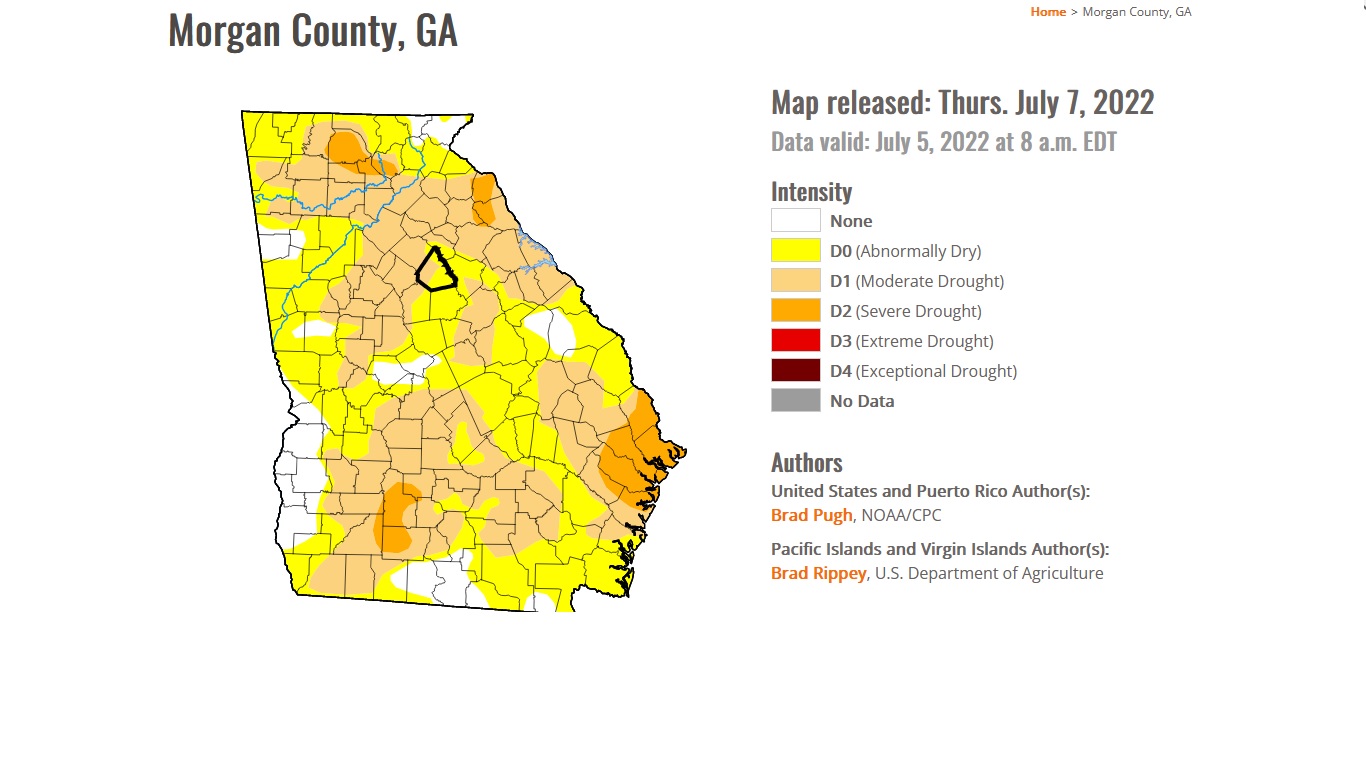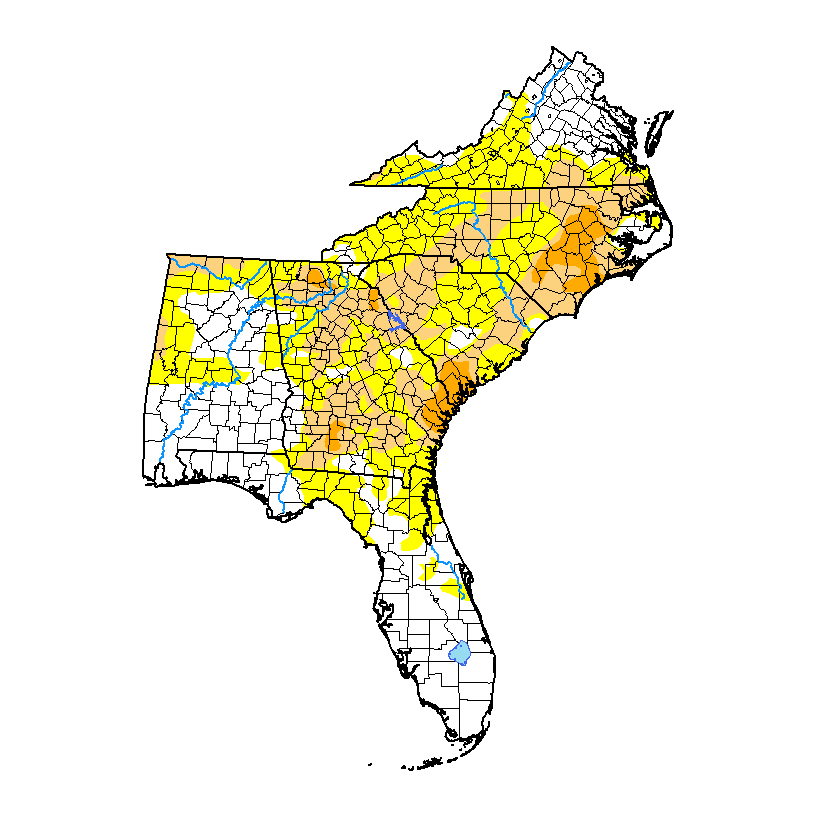-

The USDM expanded its website capabilities in late June with the addition of county-level statistics on drought to their maps. When you go to their current map at https://droughtmonitor.unl.edu/CurrentMap.aspx and click down through region to state map and then click on your county, you will see a table of drought statistics for that county farther…
-

The latest Drought Monitor, released this morning, shows a patchwork of improvements and degradations across the region depending on whether an area got hit or missed by the spotty rains. Overall, the percent of the region affected by drought had only minor changes. You can see the change map at https://droughtmonitor.unl.edu/Maps/ChangeMaps.aspx. Alabama improved overall but…
Posted in: Drought -

The North Carolina State Climate Office posted a blog story earlier this week about short-lived TS Colin, which formed near South Carolina and moved along the coast into North Carolina before it dissipated less than 24 hours after it formed. You can read more at The Tropics Come A-Colin – North Carolina State Climate Office…
-

We have just finished the first month of the official Atlantic hurricane season. How unusual has it been? One thing is that we have already had three named storms, including Colin this past week (although the last time we had TS Colin in 2016, it occurred on June 6). The average date of the first…
Posted in: Tropical weather -

The dry weather has had many impacts on our Southeast farmers this year. One of the consequences is that while disease pressure has been fairly low, the pests are out in full force. This is true for almost every crop. This story by Clint Thompson in Specialty Crop Industry discusses how the drought is affecting…
-

In the month of June, drought increased across Georgia significantly, going from just 9% at the end of May to 54% by the end of the month. Many of you have told me you think even that is an underestimate of how bad things are. One of the problems with the Drought Monitor’s depiction of…
Posted in: Climate outlooks -

You might think that summer is warmer than winter because the earth is closer to the sun. But in fact, the earth’s orbit takes us farthest from the sun in summer, on a date called the aphelion. This year’s aphelion is today, July 4. EarthSky posted an interesting story from 2018 with a photo that…